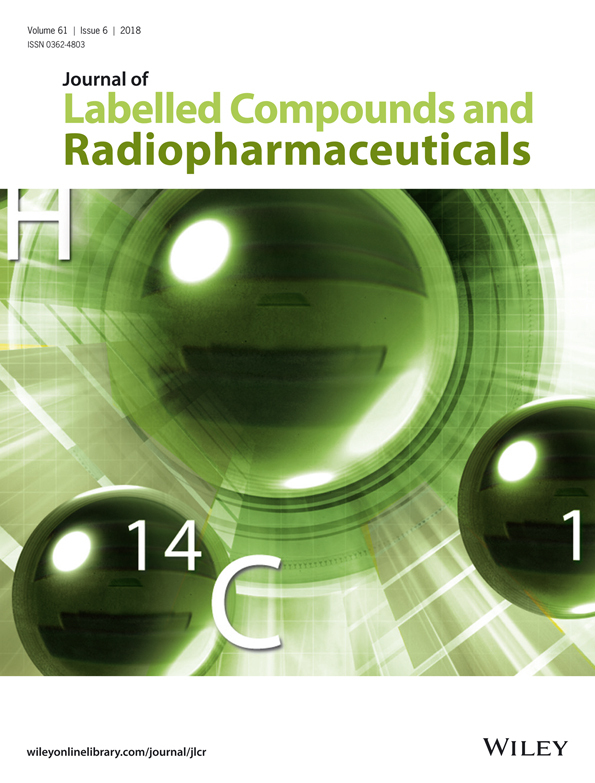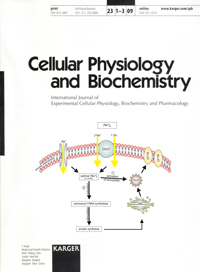
Tag Archives: antifibrotic
CB2R agonist prevents nicotine induced lung fibrosis.
 “Nicotine stimulates fibroblast proliferation while increasing inflammation and fibrosis of tissues.
“Nicotine stimulates fibroblast proliferation while increasing inflammation and fibrosis of tissues.
The cannabinoid receptor 1 (CB1R) is mainly located in the CNS, while cannabinoid receptor 2 (CB2R) is located in the immune cells within the body. CB2R regulates inflammatory processes and fibroblast function.
Nicotine induces interstitial lung fibrosis that is enhanced by the CB2R antagonist and diminished by the CB2R agonist. Therefore, the CB2R agonist may offer a protection against fibrosis.”
https://www.ncbi.nlm.nih.gov/pubmed/30675824
https://www.tandfonline.com/doi/abs/10.1080/01902148.2018.1543368?journalCode=ielu20
Crystal Structure of the Human Cannabinoid Receptor CB2.

“The cannabinoid receptor CB2 is predominately expressed in the immune system, and selective modulation of CB2 without the psychoactivity of CB1 has therapeutic potential in inflammatory, fibrotic, and neurodegenerative diseases.
Here, we report the crystal structure of human CB2 in complex with a rationally designed antagonist, AM10257, at 2.8 Å resolution. The CB2-AM10257 structure reveals a distinctly different binding pose compared with CB1. However, the extracellular portion of the antagonist-bound CB2 shares a high degree of conformational similarity with the agonist-bound CB1, which led to the discovery of AM10257’s unexpected opposing functional profile of CB2 antagonism versus CB1 agonism.
Further structural analysis using mutagenesis studies and molecular docking revealed the molecular basis of their function and selectivity for CB2 and CB1. Additional analyses of our designed antagonist and agonist pairs provide important insight into the activation mechanism of CB2. The present findings should facilitate rational drug design toward precise modulation of the endocannabinoid system.”
https://www.ncbi.nlm.nih.gov/pubmed/30639103
https://linkinghub.elsevier.com/retrieve/pii/S0092867418316258
Cannabidiol reduces airway inflammation and fibrosis in experimental allergic asthma.

“Asthma is characterized by chronic lung inflammation and airway hyperresponsiveness. Asthma remains a major public health problem and, at present, there are no effective interventions capable of reversing airway remodelling.
Cannabidiol (CBD) is known to exert immunomodulatory effects through the activation of cannabinoid-1 and -2 (CB1 and CB2) receptors located in the central nervous system and immune cells, respectively. However, as the role of CBD on airway remodelling and the mechanisms of CB1 and CB2 aren’t fully elucidated, this study was designed to evaluate the effects of cannabidiol in this scenario.
Allergic asthma was induced in Balb/c mice exposed to ovalbumin, and respiratory mechanics, collagen fibre content in airway and alveolar septa, cytokine levels, and CB1 and CB2 expression were determined. Moreover, expressions of CB1 and CB2 in induced sputum of asthmatic individuals and their correlation with airway inflammation and lung function were also evaluated.
CBD treatment, regardless of dosage, decreased airway hyperresponsiveness, whereas static lung elastance only reduced with high dose. These outcomes were accompanied by decreases in collagen fibre content in both airway and alveolar septa and the expression of markers associated with inflammation in the bronchoalveolar lavage fluid and lung homogenate. There was a significant and inverse correlation between CB1levels and lung function in asthmatic patients.
CBD treatment decreased the inflammatory and remodelling processes in the model of allergic asthma. The mechanisms of action appear to be mediated by CB1/CB2 signalling, but these receptors may act differently on lung inflammation and remodelling.”
https://www.ncbi.nlm.nih.gov/pubmed/30481497
https://www.sciencedirect.com/science/article/pii/S0014299918306836?via%3Dihub
The Role of Cannabinoids in the Setting of Cirrhosis.

“Although the mortality rates of cirrhosis are underestimated, its socioeconomic burden has demonstrated a significant global impact. Cirrhosis is defined by the disruption of normal liver architecture after years of chronic insult by different etiologies. Treatment modalities are recommended primarily in decompensated cirrhosis and specifically tailored to the different manifestations of hepatic decompensation. Antifibrogenic therapies are within an active area of investigation.
The endocannabinoid system has been shown to play a role in liver disease, and cirrhosis specifically, with intriguing possible therapeutic benefits. The endocannabinoid system comprises cannabinoid receptors 1 (CB1) and cannabinoid receptor 2 (CB2) and their ligands, endocannabinoids and exocannabinoids.
CB1 activation enhances fibrogenesis, whereas CB2 activation counteracts progression to fibrosis. Conversely, deletion of CB1 is associated with an improvement of hepatic fibrosis and steatosis, and deletion of CB2 results in increased collagen deposition, steatosis, and enhanced inflammation.
CB1 antagonism has also demonstrated vascular effects in patients with cirrhosis, causing an increase in arterial pressure and vascular resistance as well as a decrease in mesenteric blood flow and portal pressure, thereby preventing ascites. In mice with hepatic encephalopathy, CB1 blockade and activation of CB2 demonstrated improved neurologic score and cognitive function.
Endocannabinoids, themselves also have mechanistic roles in cirrhosis. Arachidonoyl ethanolamide (AEA) exhibits antifibrogenic properties by inhibition of HSC proliferation and induction of necrotic death. AEA induces mesenteric vasodilation and hypotension via CB1 induction. 2-arachidonoyl glycerol (2-AG) is a fibrogenic mediator independent of CB receptors, but in higher doses induces apoptosis of HSCs, which may actually show antifibrotic properties. 2-AG has also demonstrated growth-inhibitory and cytotoxic effects.
The exocannabinoid, THC, suppresses proliferation of hepatic myofibroblasts and stellate cells and induces apoptosis, which may reveal antifibrotic and hepatoprotective mechanisms. Thus, several components of the endocannabinoid system have therapeutic potential in cirrhosis.”
Synthesis of 13 C6 -labeled, dual-target inhibitor of Cannabinoid-1 receptor (CB1 R) and inducible nitric oxide synthase (iNOS).

“Cannabinoid-1 receptor (CB1 R) antagonists/inverse agonists have great potential in the treatment of metabolic disorders like dyslipidemia, type 2 diabetes and non-alcoholic steatohepatitis (NASH).
CB1 R inverse agonists have also been reported to be effective in mitigating fibrotic disorders in murine models.
Inducible nitric oxide synthase is another promising target implicated in fibrotic and inflammatory disorders.
We have disclosed MRI-1867 as a potent and selective, peripherally acting dual-target inhibitor of the cannabinoid receptor (CB1 R) and inducible nitric oxide synthase (iNOS).
Herein, we report the synthesis of [13 C6 ]-MRI-1867 as a racemate from commercially available chlorobenzene-13 C6 as the starting, stable-isotope label reagent. The racemic [13 C6 ]-MRI-1867 was further processed to the stable-isotope labeled enantiopure compounds utilizing chiral chromatography. Both racemic [13 C6]-MRI-1867 and S-13 C6 -MRI-1867 will be used to quantitate unlabeled S-MRI-1867 during clinical DMPK studies and will be used as an LC-MS/MS bioanalytical standard.”
Marijuana Use Is Not Associated With Progression to Advanced Liver Fibrosis in HIV/Hepatitis C Virus-coinfected Women.

“Marijuana (hereafter “tetrahydrocannabinol [THC]”) use has been associated with liver fibrosis progression in retrospective analyses of patients with chronic hepatitis C (HCV). We studied long-term effects of THC on fibrosis progression in women coinfected with human immunodeficiency virus (HIV)/HCV enrolled in the Women’s Interagency HIV Study (WIHS).
CONCLUSIONS:
In this large cohort of HIV/HCV-coinfected women, THC was not associated with progression to significant liver fibrosis. Alcohol use was independently associated with liver fibrosis, and may better predict fibrosis progression in HIV/HCV-coinfected women.”
Cannabidiol Limits T Cell–Mediated Chronic Autoimmune Myocarditis: Implications to Autoimmune Disorders and Organ Transplantation

“Cannabidiol (CBD) is a nonpsychoactive ingredient of marijuana (Cannabis sativa).
Collectively, our study demonstrates that CBD treatment markedly attenuates autoimmune myocarditis and improves myocardial dysfunction and heart failure primarily by its antiinflammatory and antifibrotic effects.
These results, coupled with the proven safety of CBD in human clinical trials and its current orphan drug approval by the FDA for different neurological disorders, suggest that it has tremendous therapeutic potential in the therapy of myocarditis with different etiologies and various autoimmune disorders. The latter is also supported by beneficial effects of CBD in preventing graft versus host disease after allogeneic hematopoietic cell transplantation in a recent phase II human study, as well as in mice with arthritis. Attenuation of the T cell–mediated injury by CBD also suggests that it may have therapeutic utility in management of organ transplantation/rejection.
In conclusion, CBD may represent a promising novel treatment for managing autoimmune myocarditis and possibly other autoimmune disorders and organ transplantation.”
https://www.ncbi.nlm.nih.gov/pubmed/26772776
https://www.ncbi.nlm.nih.gov/pmc/articles/PMC5004721/
http://static.smallworldlabs.com/molmedcommunity/content/pdfstore/16_007_Lee.pdf
Increased expression of type 1 cannabinoid (CB1) receptor among patients with rotator cuff lesions and shoulder stiffness.
:
“Shoulder stiffness is a disease manifested by pain, limited range of motion, and functional disability. The inflammatory and fibrosis processes play a substantial role in the pathogenesis of shoulder stiffness. The CB1 receptor has been recognized to mediate the processes of pathologic fibrosis.
This study investigated the role of the CB1 pathway in pathogenesis of rotator cuff lesions with shoulder stiffness.
The CB1 pathway is involved in the pathogenesis of shoulder stiffness. It may be a promising target for the treatment of rotator cuff lesions with shoulder stiffness.”
https://www.ncbi.nlm.nih.gov/pubmed/29108858
http://www.jshoulderelbow.org/article/S1058-2746(17)30589-X/fulltext
Activation of Cannabinoid Receptor Type II by AM1241 Ameliorates Myocardial Fibrosis via Nrf2-Mediated Inhibition of TGF-β1/Smad3 Pathway in Myocardial Infarction Mice.

“Myocardial interstitial fibrosis is a major histologic landmark resulting in cardiac dysfunction after myocardial infarction (MI).
Activation of cannabinoid receptor type II (CB2 receptor) have been demonstrated to reduce fibrosis in hepatic cirrhotic rat.
In this study, we aimed to investigate the effects of a CB2 receptor selective agonist AM1241 on myocardial fibrosis post MI in mice.
CONCLUSION:
CB2 receptor agonist AM1241 alleviated myocardial interstitial fibrosis via Nrf2 -mediated down-regulation of TGF-β1/Smad3 pathway, which suggested that CB2 receptor activation might represent a promising target for retarding cardiac fibrosis after MI.”
